Meet the Mascots: Check Out the Wild and Wacky Olympic Mascot Photo Gallery
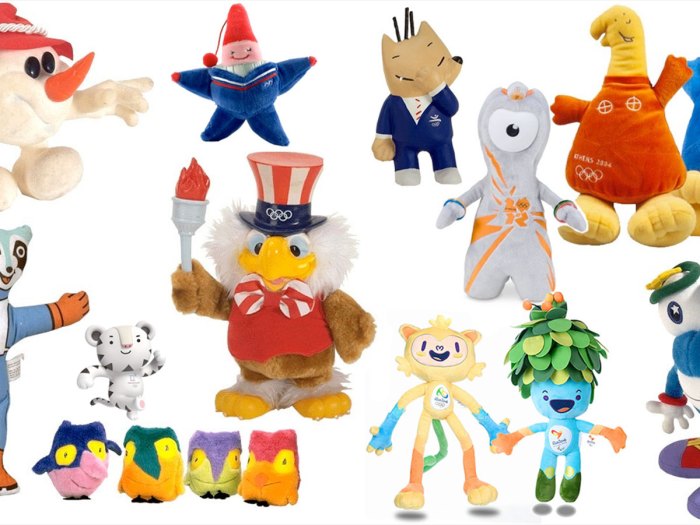
Since 1968, the Olympics have proudly paraded a quirky cast of mascots, each more eccentric than the last! Dive into our photo gallery of Olympic mascots and get ready for a celebration of cuteness and creativity.
Which ones do you think were wildest, wackiest, weirdest, and coolest mascots of all time? Comment with your votes below.

1968 Winter Olympics in Grenoble, France
Although it was just an unofficial Olympic mascot, Schuss zipped down the French slopes with endless enthusiasm.
Fun fact: Schuss was designed in only one night.
Critics say: It’s a little skier who looks like he escaped from a cartoon toothpaste ad, zooming down the slopes and leaving a trail of minty freshness and fun. Schuss set the bar for future Olympic mascots by being both delightfully creepy and unforgettably weird.
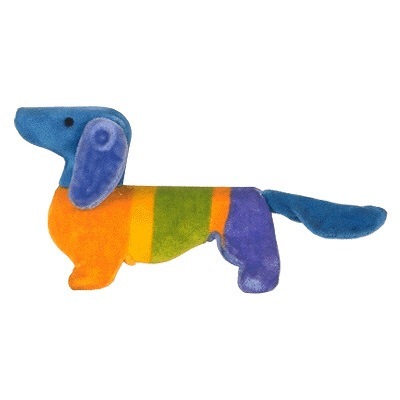
1972 Summer Olympics in Munich, West Germany
Waldi the dachshund was the first official Olympic mascot.
Fun fact: The route of the marathon at the 1972 Olympics was shaped like Waldi. The race started at the neck and went counterclockwise.
Critics say: Waldi is a dachshund who looks like he’s always ready for a walk (or a marathon). He probably brought his own tiny running shoes.
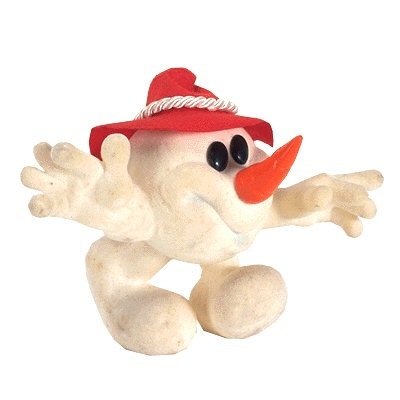
1976 Winter Games in Innsbruck, Austria
Schneemann was a charming snowman wearing a traditional Tyrolean hat. He represented the cozy, festive feeling of winter sports.
Fun fact: Schneeman was a commercial success, selling many t-shirts and stuffies, which is the most important job for Olympic mascots.
Critics say: He looks like your friendly neighborhood snowman detective, always on the lookout for missing sleds and stolen carrot noses.
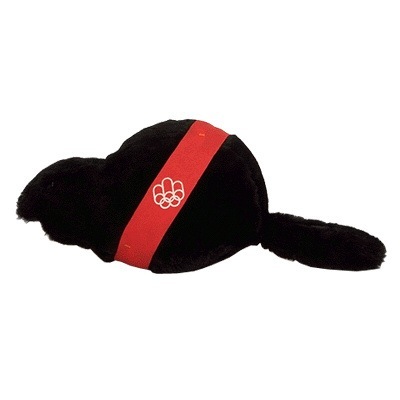
1976 Summer Games in Montreal, Canada
Amik the beaver was the official Olympic mascot of the 1976 Summer Games in Montreal, Canada.
Fun fact: The beaver is one of the national symbols of Canada.
Critics say: Amik the beaver is a construction expert who seems to be saying, “I built these Olympic arenas with my own two teeth.” He’s the ultimate symbol of hard work and community spirit.

1980 Winter Games in Lake Placid, New York
Roni the raccoon brought woodland charm to the games. His masked face resembled the hat and goggles used by competitors.
Fun fact: The games’ organizers also used real raccoons as mascots.
Critics say: Roni the raccoon looks like he’s just been caught red-handed raiding the snack bar. With his wide eyes and cheeky grin, he’s always ready for mischief.
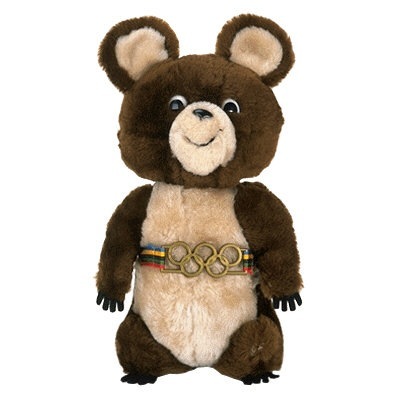
1980 Summer Games in Moscow, USSR
Misha was the mascot for the 1980 Summer Games in Moscow, USSR. Its full name was Mikhail Potapych Toptygin.
Fun fact: The bear was the national symbol of the Soviet Union. Several years before the Olympics, Misha took off on a rocket and visited the Salyut 6 space station.
Critics say: Misha gives the best bear hugs and is always up for a friendly chat about honey and sportsmanship. His smile could melt even the worst Cold War tensions, if not for that pesky boycott.
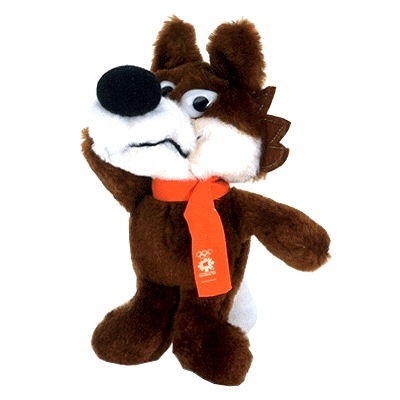
1984 Winter Games in Sarajevo, Yugoslavia
Vučko, a friendly wolf, quickly became a symbol of peace and friendship during the games.
Fun fact: His name means “little wolf.” The wolf is featured in many Yugoslavian fables.
Critics say: Vučko, the wolf with a heart of gold, seems surprisingly tame considering his wild ancestry. He’s the kind of wolf who’d help you find your lost mittens.
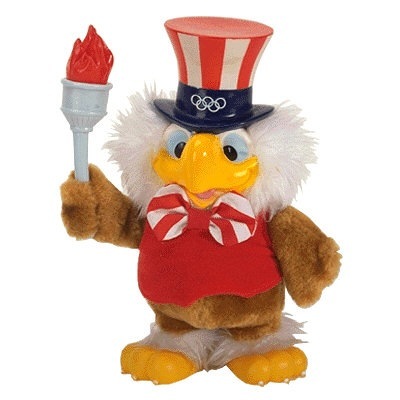
1984 Summer Games in Los Angeles, California
Sam the eagle was friendly and cheerful. He featured many elements of American culture.
Fun fact: He was designed by a Disney artist.
Critics say: Sam the eagle is as patriotic as they come, with a beak for delivering inspiring speeches and wings ready to spread freedom and fun. He’s the ultimate star-spangled Olympic mascot.
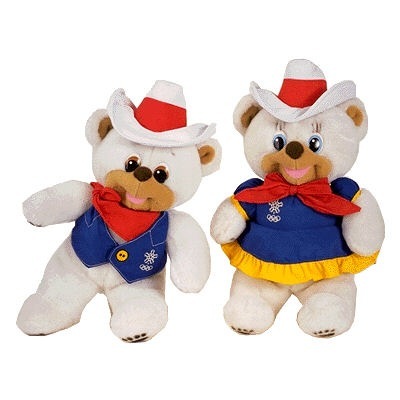
1988 Winter Games in Calgary, Canada
Hidy and Howdy were polar bears who welcomed everyone to Canada with open arms and big smiles.
Fun fact: The bear siblings were the first dual mascot.
Critics say: A brother-sister polar bear duo that probably moonlight as Canadian Mounties. They’re here to make sure you have a great time, eh?
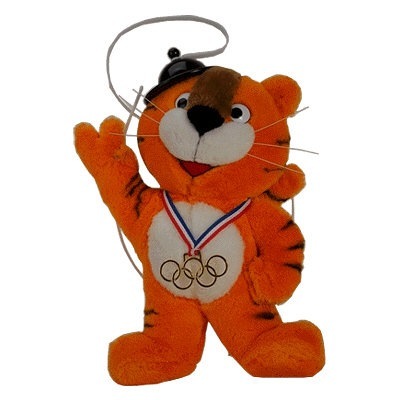
1988 Summer Games in Seoul, South Korea
Hodori the tiger was the mascot at the 1988 Summer Games in Seoul, South Korea.
Fun fact: Seoul also had a female mascot named Hosuni.
Critics say: Hodori the tiger is always on the prowl for new friends and adventures. His playful demeanor and charming stripes make him the life of the Olympics.
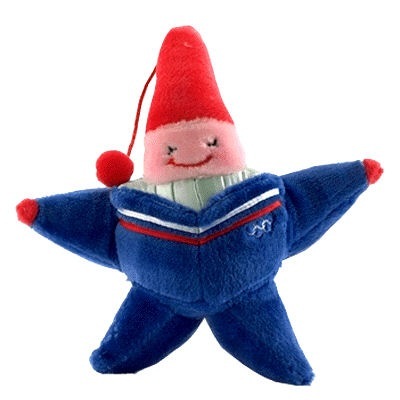
1992 Winter Games in Albertville, France
Magique the star-shaped snow imp symbolized dreams and imagination.
Fun fact: Magique replaced a mountain goat to become this Olympic’s mascot. His colors came from the French flag.
Critics say: A star-shaped sprite who seems like he escaped from a cartoon. His main power? Making you smile despite the freezing temperatures.
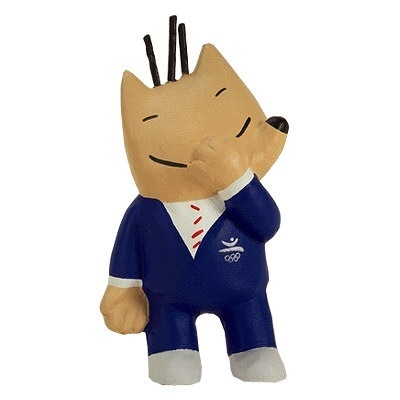
1992 Summer Games in Barcelona, Spain
Cobi is a Pyrenean mountain dog drawn in an avant-garde, cubist style.
Fun fact: His design was influenced by the works of Picasso.
Critics say: Cobi the sheepdog looks like Picasso drew him after eating bad tapas. He’s quirky, artsy, and always ready to bring a dose of abstract joy to the games.

1994 Winter Games in Lillehammer, Norway
Haakon and Kristin brought a blend of history and modern Olympic spirit to the games:
Fun fact: The mascots were two children from Norwegian history dressed in medieval clothes. They were the first mascots in human form.
Critics say: Haakon and Kristin are Viking kids who seem like they just raided a candy store. They’re ready for epic snowball fights and historical reenactments with a twist.

1996 Summer Games in Atlanta, Georgia
Izzy is a colorful, shape-shifting character full of surprises.
Fun fact: The mascot was originally named “Whatizit,” but he was renamed Izzy by the children of Atlanta.
Critics say: No one’s quite sure what Izzy is, but he looks like the result of a sugar-fueled brainstorming session. A blue, shape-shifting blob of pure Olympic chaos.
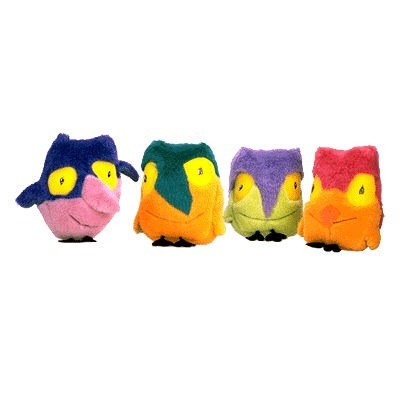
1998 Winter Games in Nagano, Japan
The Snowlets — Sukki, Nokki, Lekki and Tsukki — were four snowy owls representing fire, air, earth, and water.
Fun fact: Nagano’s original mascot was a weasel named Snowpie.
Critics say: These four wise owls always look slightly confused, like they’ve been woken up way too early from hibernation. They’re still trying to figure out why they’re not in Hogwarts.
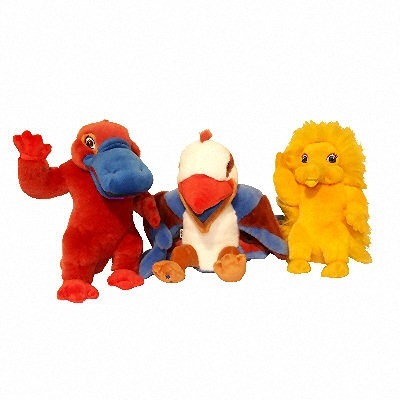
2000 Summer Games in Sydney, Australia
Olly the kookaburra, Syd the platypus, and Millie the echidna brought Aussie charm to the games.
Fun fact: Game organizers purposely avoided choosing kangaroos and koalas as mascots because they were too obvious.
Critics say: This trio — a kookaburra, a platypus, and an echidna — could host their own wildlife talk show. They bring the best of Down Under charm and humor to the games.

2002 Winter Games in Salt Lake City, Utah
Powder, Coal and Copper represented Utah’s snow, natural resources and land.
Fun fact: The hare, coyote, and bear are major characters in Native American legends and each wore a petroglyph charm around its neck.
Critics say: A hare, a coyote, and a bear who look like they formed a garage band but can’t decide on their genre. Their music? A mix of rock and country with a bit of howling.

2004 Summer Games in Athens, Greece
Phevos and Athena were designed to symbolize the link between ancient Greece and the modern Olympics.
Fun fact: These Olympic mascots were inspired by traditional Greek dolls from the 7th century BC. They were named after Greek gods.
Critics say: Sibling gods who look like they just stepped out of an ancient Greek vase painting. They’re here to bring some divine flair to the games.
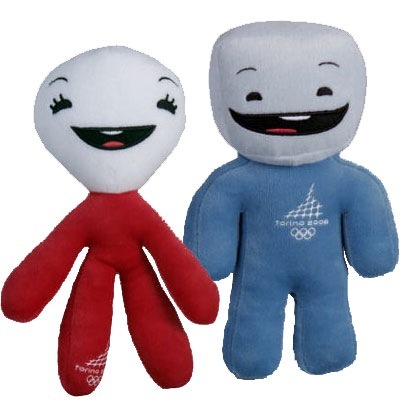
2006 Winter Games in Turin, Italy
Neve the snowball and Gliz the ice cube represented the elements required for a successful winter games.
Fun fact: Their names mean “snow” and “ice” in Italian, and they were chosen from more than 200 proposals.
Critics say: A snowball and ice cube that seem like they belong in a Pixar short about unlikely friendships. They melt hearts without melting themselves.
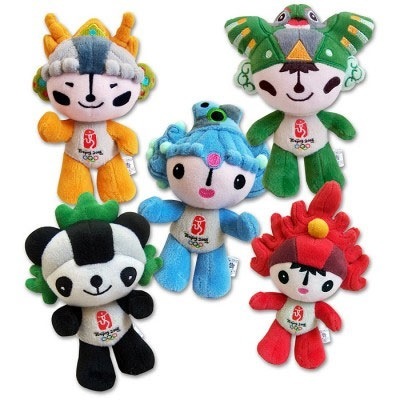
2008 Summer Games in Beijing, China
The five Fuwa children represented different elements and regions of China, creating a harmonious and colorful Olympic games.
Fun fact: Together, their five names form a Chinese phrase which means “Beijing welcomes you.”
Critics say: These five dolls are like the Avengers of the Olympics, each with a special power to bring harmony and happiness. They’re cute, colorful, and ready to dazzle the world.
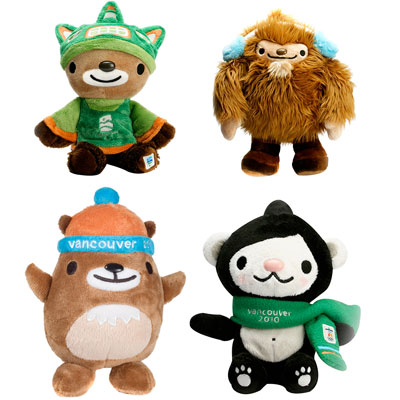
2010 Winter Games in Vancouver, Canada
Miga the sea bear, Quatchi the sasquatch, and Sumi the thunderbird brought a blend of mythology and fun to the games. Mukmuk the marmot was their sidekick.
Fun fact: The Olympic mascots were inspired by First Nations legends.
Critics say: A mythical sea bear, a sasquatch, and an animal guardian spirit. It sounds like the start of a joke: “A sea bear, a sasquatch, and a spirit walk into a …” These three are all about the fun and games.
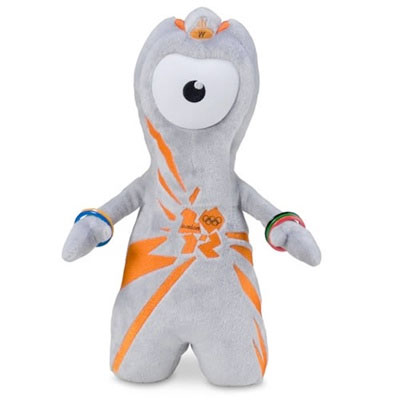
2012 Summer Games in London, England
Wenlock represented drops of steel and brought a touch of the future to the games.
Fun fact: He was named after an English town which hosted the first unofficial modern Olympic Games in 1850.
Critics say: This futuristic figure looks like it stepped out of a sci-fi movie, here to show that the future of fun is now. Wenlock’s all about innovation and a jolly good time.
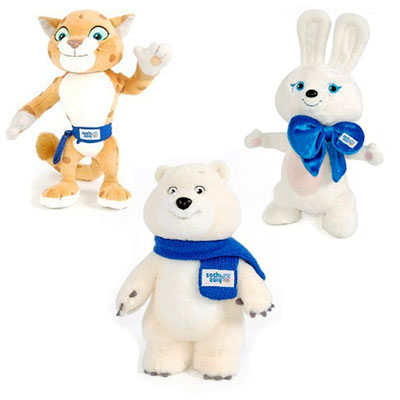
2014 Winter Games in Sochi, Russia
The Leopard, the Hare and the Polar Bear represented different parts of Russia, showcasing the country’s diverse wildlife and landscapes.
Fun fact: The Olympic mascots were selected by the Russian people during a live national TV broadcast by text message voting.
Critics say: A bear, a leopard, and a hare who look like they just escaped a Russian fairy tale, ready to add a dash of magic and a sprinkle of adventure to every event.
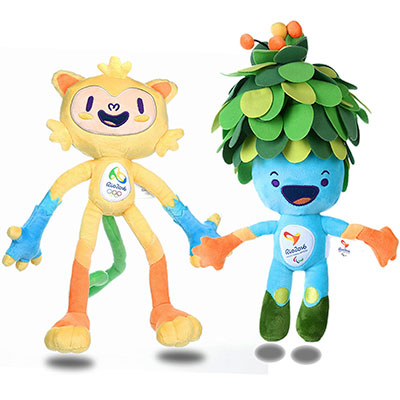
2016 Summer Games in Rio de Janeiro, Brazil
Vinicius, a mixture of all Brazilian animals, was the Olympic Games mascot. Tom, a magical fusion of all the plants in the Brazilian forests, was the Paralympic Games mascot.
Fun fact: Vinicius was named for a famous bossa nova composer.
Critics say: Vinicius and Tom are the ultimate carnival mascots, with samba moves and a party attitude. Named after famous Brazilian musicians, they’re ready to dance the night away.
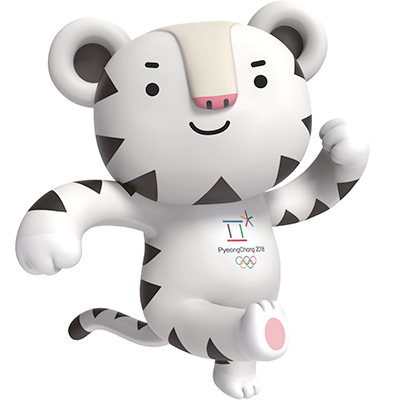
2018 Winter Games in PyeongChang, South Korea
Soohorang, a white tiger, was a symbol of strength and protection.
Fun fact: His name came from “Sooho,” meaning protection in Korean, and “Rang,” from the Korean word for tiger, making him the perfect guardian of the games.
Critics say: A white tiger who probably doubles as a motivational speaker. He’s got the stripes of an athlete and the heart of a champion.
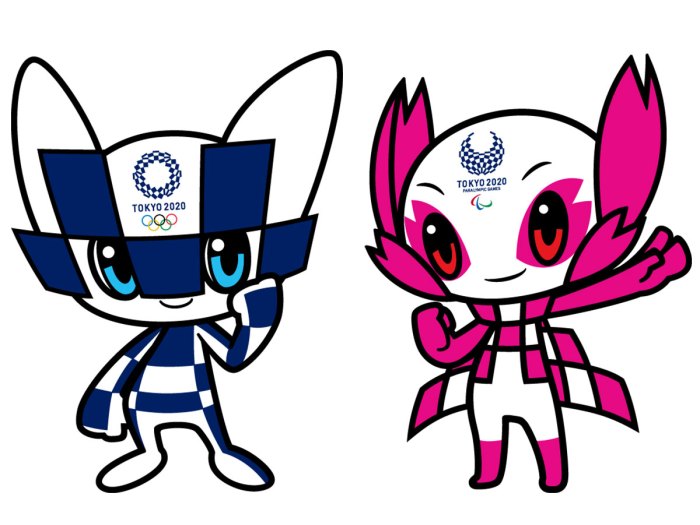
2020 Summer Games in Tokyo, Japan
Miraitowa (left) was the official mascot of the 2020 Summer Games (postponed to 2021) in Tokyo, Japan. It was named for the Japanese words for “future” and “eternity.” Someity (right) was the mascot for the 2020 Summer Paralympics. It was named after a type of cherry blossom.
Fun fact: The mascots were inspired by superheroes. Miraitowa had the ability to teleport, and Someity could fly.
Critics say: These futuristic beings seem like they’ve traveled back in time to show us what’s cool. Miraitowa’s got the energy, and Someity’s got the smarts.
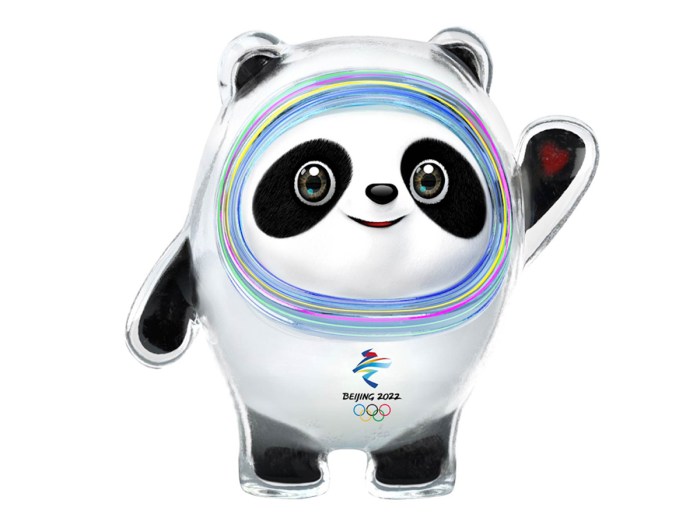
2022 Winter Games in Beijing, China
Bing Dwen Dwen was a loveable panda wearing a full-body shell of ice, which helped the mascot skate, snowboard and ski alongside the Olympic athletes.
Fun fact: His name means “ice” and “lively and robust,” perfectly capturing his energetic and adventurous spirit.
Critics say: A panda in a space suit because why not? He’s ready to explore new frontiers in both space and snow sports.
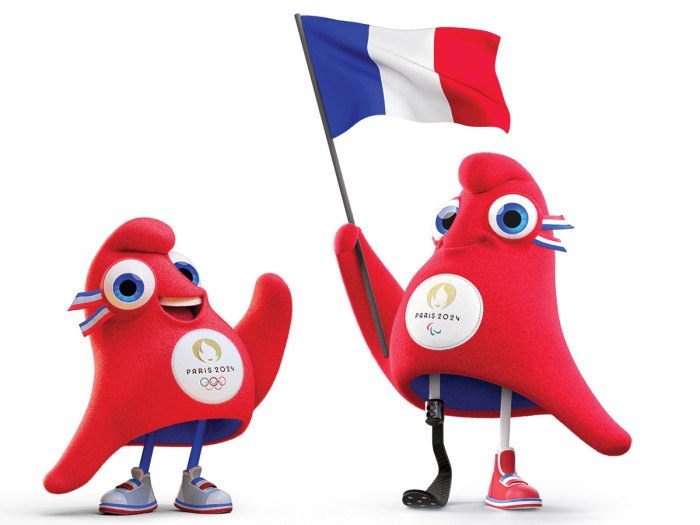
2024 Summer Games in Paris, France
Olympic Phryge is the mascot for the Paris 2024 Olympics. It’s inspired by the small Phrygian hat.
Fun fact: The Phrygian cap is a common metaphor for freedom found in French art and sculpture. The symbolic hat is even used on French coins and stamps.
Critics say: Phryge is a stylish French hat that looks like it’s about to start a fashion revolution. Chic, unique, and très magnifique!
Which Olympic mascots were your favorite? Comment below with your vote for the wildest, wackiest, weirdest, and coolest mascots of all time. Plus, watch Team USA’s Top 10 Olympic moments, laugh at funny Olympic jokes, and take our Summer Olympics quiz.
Izzy!This is 100% good for me.
2020 china was my favorite and i agree with non of your Business they do look like marshmellos
Tuesday, February 08, 2022 (2022 Winter Olympics Day #4)….As of Today, Tuesday, February 08, 2022 (2022 Winter Olympics Day #4), the United States of America Olympic Team has won one (1) Gold Medal, five (5) Silver Medals, and one (1) Bronze Medal at the 2022 Winter Olympics Athletic Competitions. Did any of the United States of America 2022 Olympics Team earn the Presidential Physical Fitness Award awarded to public school students when the athletes were students in public school or when the athletes were registered youth members in the Boy Scouts of America, SCOUTS B.S.A.?
the 2006 look like marshmallows.
Bonjour
2012 is definitely the best! Drops of steel sounds so cool. I remember playing an Olympic video game, featured in 2012 and that mascot was in there.
I like the 2020 ones and the 2000 Olympic mascots. They’re so cool!